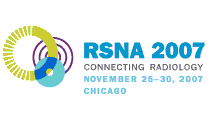
Abstract Archives of the RSNA, 2007
Petrina A. Causer MD, Presenter: Nothing to Disclose
Roberta A. Jong MD, Abstract Co-Author: Research collaboration, General Electric Company
Ellen Warner, Abstract Co-Author: Nothing to Disclose
Kimberley Hill, Abstract Co-Author: Nothing to Disclose
Donald B. Plewes PhD, Abstract Co-Author: Nothing to Disclose
To determine the frequency and outcomes of the BI-RADS final assessment categories for screening breast MRI in a high risk population.
During a seven year period, 451 high risk patients underwent annual breast screening with MRI, mammography and ultrasound. Included are 2341 MRI screening studies for 1555 breasts, which were independently assigned with BI-RADS category for each modality. Examinations initially assigned a zero were reclassified from one to five following a diagnostic work-up. Breast cancer status of each breast per study was determined based on histopathologic correlation or at least one year follow-up for presumed benign studies (BI-RADS one, two and three). The frequencies and positive predictive value (PPV) of each category was determined.
The screening MRIs were classified BI-RADS one to five with the following frequencies: category one, 1456 (62%); category two, 645 (28%); category three, 132 (6%); category four, 105 (4%) and category five, three (0.1%). The PPV for each category from one to five respectively was as follows: 1/1456 (0.069%); 3/645 (0.46%); 5/132 (3.8%); 37/105 (35.2%) and 3/3 (100%).
Although the PPV of a screening MRI BI-RADS three category is slightly higher than that established for screening and diagnostic mammography and diagnostic ultrasound, it remains predictive of benignity, allowing detection and diagnosis at short term follow-up, preventing a higher biopsy rate for benign disease. The remaining categories are similar to those PPVs established for screening and diagnostic mammography and diagnostic ultrasound.
The BI-RADS categories for screening breast MRI are useful for predicting malignancy and similar to those established for screening and diagnostic mammography and diagnostic ultrasound.
Causer, P,
Jong, R,
Warner, E,
Hill, K,
Plewes, D,
Outcomes of the BI-RADS Breast MRI Assessments Categories in a High-Risk Screening Population. Radiological Society of North America 2007 Scientific Assembly and Annual Meeting, November 25 - November 30, 2007 ,Chicago IL.
http://archive.rsna.org/2007/5003655.html

